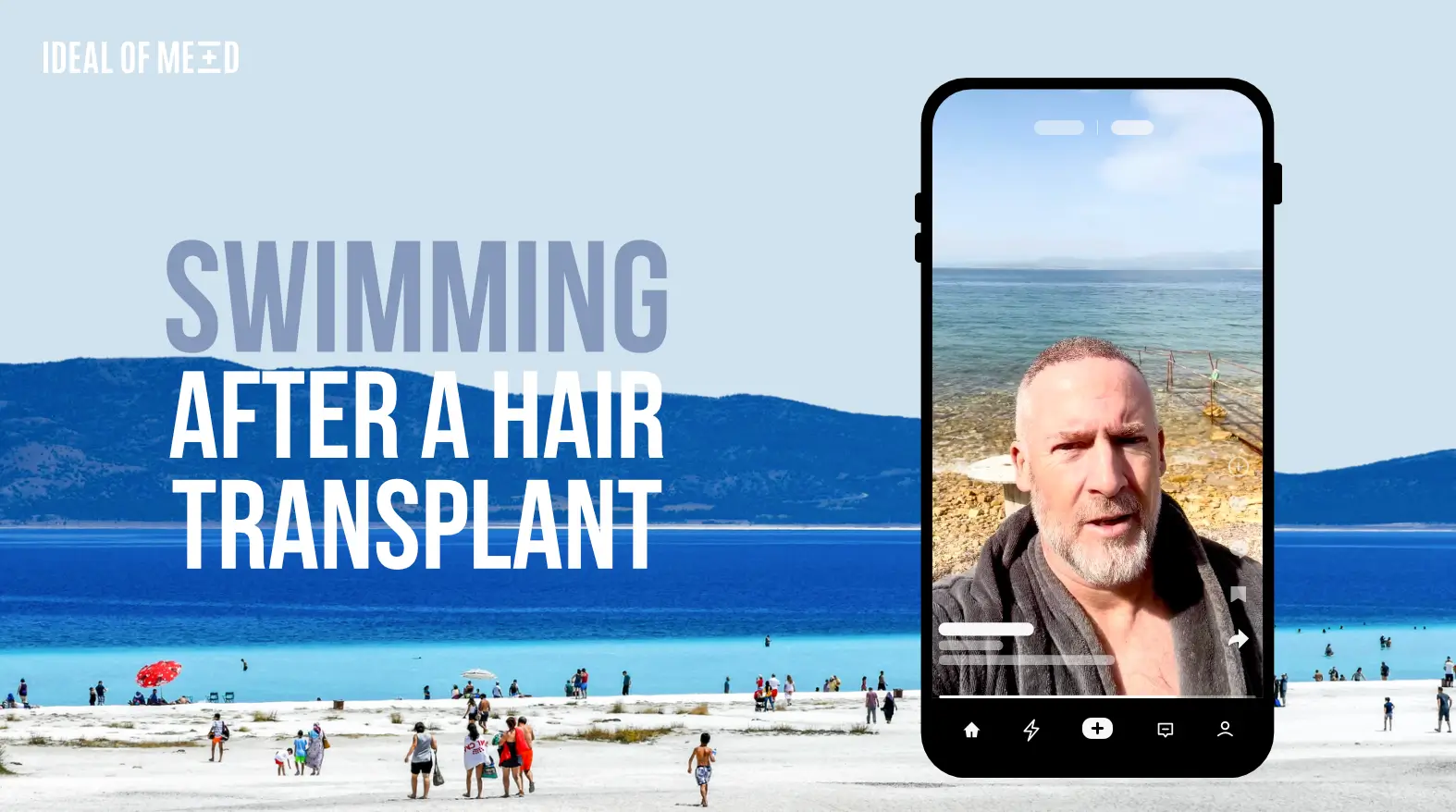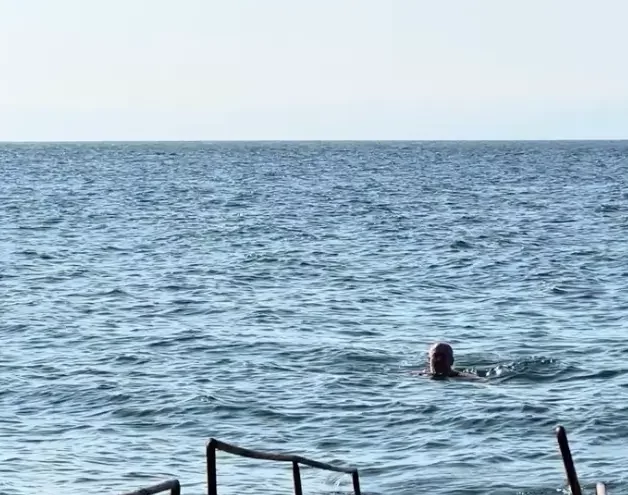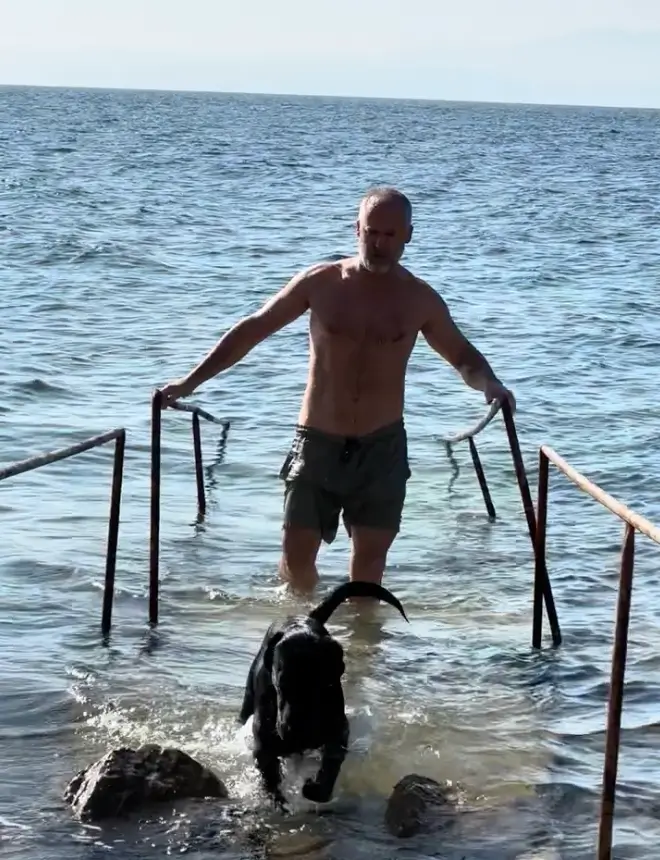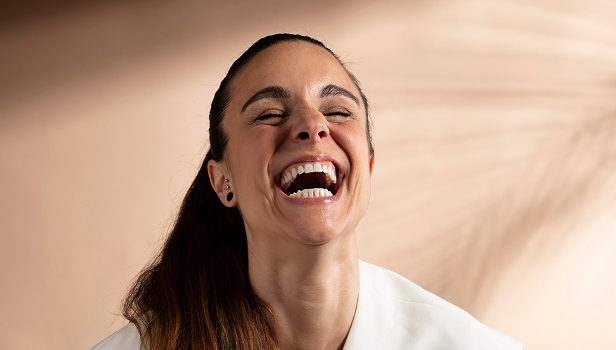As the weather warms up, you might be eager to dive back into the water. But if you’ve recently had a hair transplant, jumping in too soon can jeopardize your results. Chlorinated pools, saltwater, and bacteria in lakes or oceans can interfere with healing, increasing the risk of infection or graft failure.
At Ideal of MeD, our official recommendation is that you can safely swim 3 months after your hair transplant. By this time, your scalp has undergone significant healing, and your sebaceous glands have begun restoring their natural protective barrier. While some patients may feel ready sooner, waiting for 3 months minimizes the risk of infection, irritation, and graft damage. If you choose to swim earlier, consult your hair specialist for personalized advice and take extra precautions to protect your scalp.

We prioritize your recovery by providing clear post-operative care guidelines. In this guide, we’ll explain the scientific reasons behind swimming restrictions, how different water types affect healing, and practical steps to protect your hair transplant.
Before diving into the guide, consider downloading the Hair Back App. It’s a free community where you can ask questions, get tips, and share experiences with real people who’ve been through the same process. It’s a helpful way to stay informed and supported throughout your recovery.
WHEN IS IT SAFE TO SWIM AFTER A HAIR TRANSPLANT?

If you search the internet, you’ll find tons of contradictory advice about when it’s safe to swim after a hair transplant. Dermatological sources typically recommend waiting 2 to 4 weeks, but if you look at patient testimonials, the recommendations by their doctors vary widely—some were told to wait 6 months, others 2 years, and some just 1 month.
The reality? There are no definitive studies on this topic, and the recovery timeline is highly individual. A hair transplant isn’t just a cosmetic procedure—it’s surgery. The amount of grafts transplanted, the level of trauma to the scalp, and your body’s natural healing process all influence how soon you can safely swim.
INTRODUCTION
When discussing swimming after a hair transplant, it’s important to understand the role of sebaceous glands (SGs) and their recovery after the procedure. These glands produce sebum, the natural oil that protects the scalp and hair. The healing process is highly individual—while initial recovery may take around 4 weeks, full stabilization of sebum production typically occurs between 3 to 6 months post-transplant.
Several factors influence this timeline, including your individual physiology, post-transplant care, and any treatments you undergo to accelerate recovery. Procedures like MSC stem cell therapy can enhance sebaceous gland regeneration and support hair follicle healing. Additionally, your lifestyle choices, diet, and overall health play a crucial role in determining how quickly your scalp returns to its natural state.
Understanding this process can help you make informed decisions about when to resume activities like swimming and how to best support your scalp’s recovery.
Sebaceous Glands (SGs) & Their Role in Skin Health
Sebaceous glands (SGs) are tiny structures attached to hair follicles that produce sebum, an oily substance that keeps our skin hydrated and protected. Sebum plays a crucial role in maintaining skin moisture, regulating body temperature, and even influencing the skin’s microbiome. Too much sebum can cause oily skin and acne, while too little can lead to dryness and irritation.
How Long Does It Take for Sebaceous Glands to Regenerate?
In humans, sebaceous glands naturally renew themselves every 2 to 4 weeks. This happens because the cells that produce sebum (called sebocytes) go through a continuous cycle of growth, maturation, and breakdown. When the gland is damaged—such as after a hair transplant or injury—the regeneration process can take longer, but it is supported by special stem cells.
How Hair Stem Cells Help in Sebaceous Gland Regeneration
Hair follicle stem cells play a crucial role in restoring sebaceous glands after injury. When sebaceous gland stem cells are lost or impaired, hair follicle stem cells step in to replace and regenerate the gland. This shows that stimulating hair follicle stem cells can speed up the healing and restoration of both the hair and sebaceous glands after a hair transplant.
Boosting Sebaceous Gland Recovery with MSC Exosomes After Hair Transplant
One way to enhance hair follicle stem cell activity is by injecting Mesenchymal Stem Cell (MSC) Exosomes after a hair transplant. MSC exosomes are tiny vesicles released by stem cells that carry growth factors and healing signals. These exosomes can:
- Accelerate tissue repair by stimulating hair follicle stem cells
- Enhance sebaceous gland regeneration by activating skin and follicular stem cells
- Improve skin hydration & reduce inflammation, leading to faster healing
- Support stronger, healthier hair growth by nourishing the scalp
By injecting MSC exosomes post-hair transplant, we can speed up both hair growth and sebaceous gland restoration, ensuring a healthier, more natural scalp environment for the newly transplanted follicles.
WHEN CAN YOU SWIM AFTER A HAIR TRANSPLANT: WHY THE WAIT?
The scalp’s barrier function remains compromised for at least four weeks post-surgery, making it more vulnerable to external irritants like chlorine and salt.
RISKS OF SWIMMING TOO SOON AFTER A HAIR TRANSPLANT
1. Infection Risk
- Chlorinated pools contain chemicals that kill bacteria but can still lead to scalp irritation.
- Lakes and rivers may harbor harmful bacteria and fungi, increasing the risk of folliculitis (inflamed hair follicles).
- Oceans and seas contain salt and marine microbes that can trigger inflammation in healing skin.
2. Delayed Healing & Inflammation
- Chlorine strips natural oils from the scalp, leading to dryness and irritation.
- Saltwater can dehydrate the skin and prolong redness or itching.
- Extended water exposure may slow the epithelialization process (formation of new skin over healing grafts).
THE science Behind Seawater and Post-Surgical Wounds
A common misconception among patients is that seawater exposure promotes wound healing. However, recent research suggests otherwise. A study by Quinn et al. (2022), published in Wound Practice and Research, highlights significant risks associated with seawater exposure to surgical wounds.
Bacterial Risks in Marine Environments
Seawater contains a diverse range of microorganisms, including Vibrio spp., Aeromonas spp., and Mycobacterium marinum, all of which can cause serious soft tissue infections. Of particular concern is Vibrio vulnificus, a highly virulent bacteria that can lead to severe necrotizing fasciitis, a life-threatening condition with a 30–40% fatality rate even with prompt medical intervention.

Patient Perceptions vs. Medical Reality
The study surveyed 1,000 patients attending an orthopedic outpatient clinic in Australia, revealing that:
- 89% of respondents believed seawater exposure benefits wound healing.
- 29% of post-surgical patients admitted to exposing their wounds to seawater.
- 95% of these patients believed seawater improved healing.
This widespread but incorrect belief presents a significant public health concern, as previous studies have confirmed the presence of 10⁵–10⁷ bacteria per milliliter of seawater. This high bacterial load increases the risk of postoperative infections, particularly in fresh surgical wounds.
What This Means for Hair Transplant Patients
Since a hair transplant involves thousands of tiny incisions, exposing the scalp to seawater during the critical healing phase can introduce harmful bacteria, leading to delayed healing, folliculitis, or even serious infections. While the benefits of seawater for skin conditions like eczema are often discussed, these do not apply to open wounds or surgical sites.
Thus, despite the cultural and social appeal of swimming, hair transplant patients should strictly avoid seawater exposure until their surgeon confirms that their scalp has fully healed.
TIPS FOR Safe SWIMMING After a Hair Transplant
- Consult your hair specialist for personalized advice, or use Hair Back App for tailored recommendations.
- Factor in sebaceous gland recovery—sebum production takes 3 to 6 months to stabilize, and this natural protection helps shield your scalp.
- Swimming cap concerns—while grafts are secure after 1 month, tight swim caps can pull on hair. If it makes you feel uncomfortable or anxious, it’s best to skip the cap.
- Modify your swimming habits—you may be able to swim after a month, but consider avoiding diving to minimize scalp stress.
- Absolutely avoid UV exposure—your healing scalp is highly sensitive to the sun, so always protect it.
Ultimately, the best approach is to listen to your body, follow medical advice, and adjust based on your personal healing pace.
Final Thoughts
Swimming after a hair transplant requires patience and proper precautions. Rushing back into the water too soon can put your results at risk, but by following Ideal of MeD’s guidelines and waiting the recommended time, you’ll protect your investment in your hair and speed up your recovery. For personalized recovery plans, consider booking a free consultation with us today.
For faster recovery, consider MSC Exosome Therapy, and use the Hair Back App to stay on track with your healing journey.
FAQ: Swimming After a Hair Transplant
It’s recommended to wait at least 2 to 4 weeks before swimming. However, individual recovery times may vary, so always follow your specialist’s advice.
Yes, chlorine can irritate the scalp and disrupt healing. It’s best to avoid chlorinated pools during the initial healing phase.
After 1 month, your grafts are secure, but tight swimming caps can pull on hair. If you feel uncomfortable wearing one, it’s best to skip it.
If your scalp gets wet, gently pat it dry and avoid further irritation. Consult your doctor if you have concerns.
At Ideal of MeD, we offer MSC Exosome Therapy, an advanced treatment designed to accelerate healing and enhance graft survival. Exosomes are microscopic extracellular vesicles packed with regenerative growth factors that:
Stimulate hair follicle stem cells: MSC exosomes activate the stem cells in your hair follicles, which are crucial for the restoration of both hair growth and the sebaceous glands.
Enhance sebaceous gland (SG) regeneration: By stimulating hair stem cells, MSC exosomes help in the recovery of sebaceous glands, which are essential for producing sebum that protects the scalp.
Rebuild your natural protective barrier: The regeneration of sebaceous glands helps to restore the natural oil production on the scalp, forming a protective barrier against external irritants.
Improve skin hydration and reduce inflammation: MSC exosomes help the scalp retain moisture, minimizing dryness and irritation, thus promoting faster healing.
Support stronger, healthier hair growth: By nourishing the scalp and accelerating tissue repair, MSC exosomes help ensure the long-term success of your hair transplant, leading to thicker and healthier hair growth.
Wait until you’ve received the green light from your doctor before getting into any pool, lake, or ocean.
Start with light swimming, avoiding water that’s too cold or chlorinated.
Always protect your scalp from direct sun exposure to avoid further irritation.




